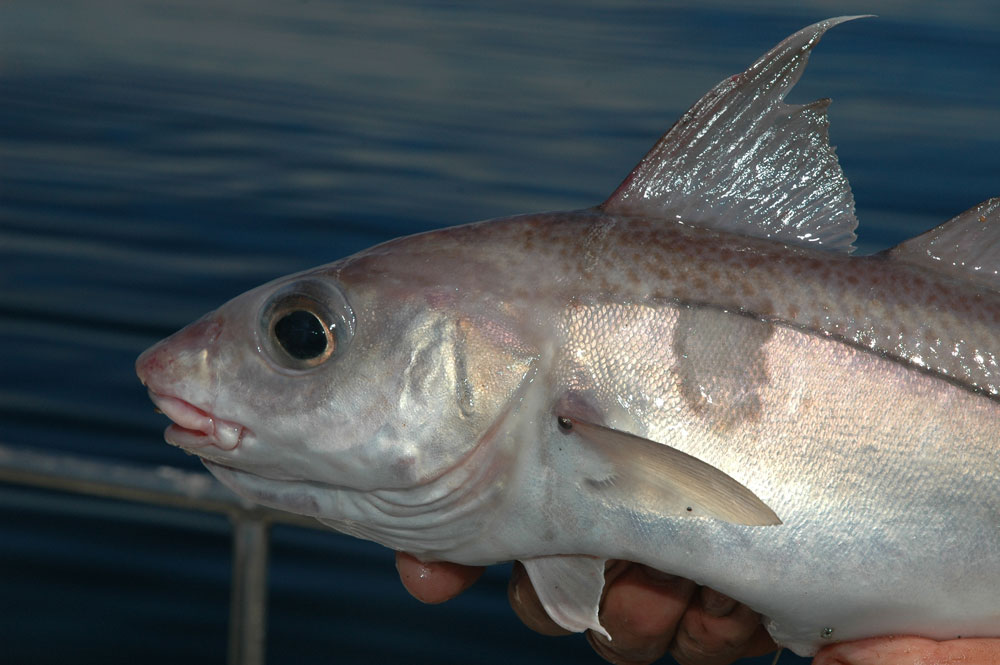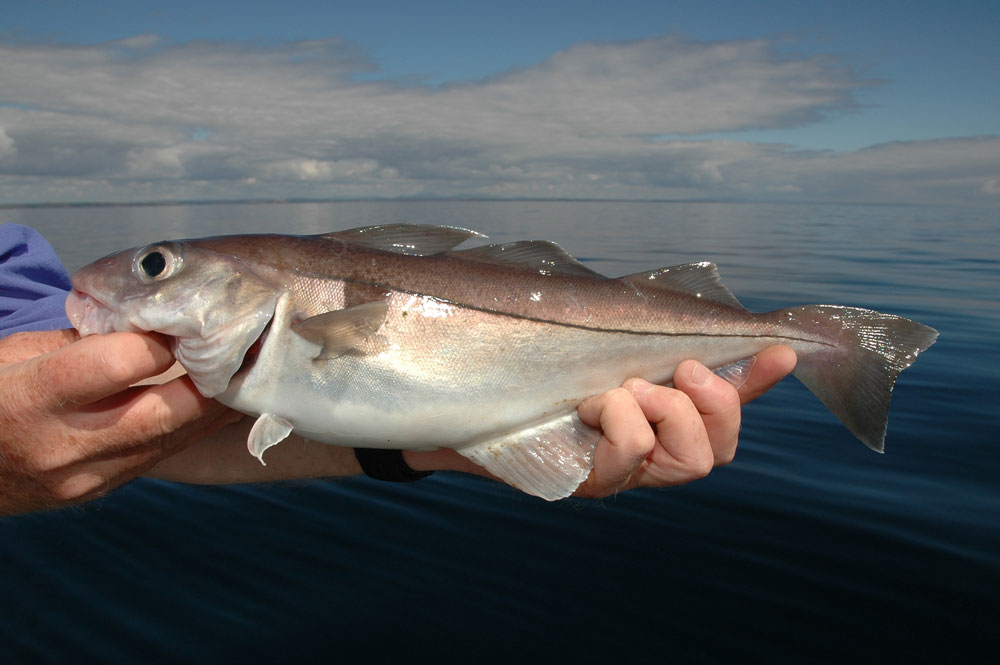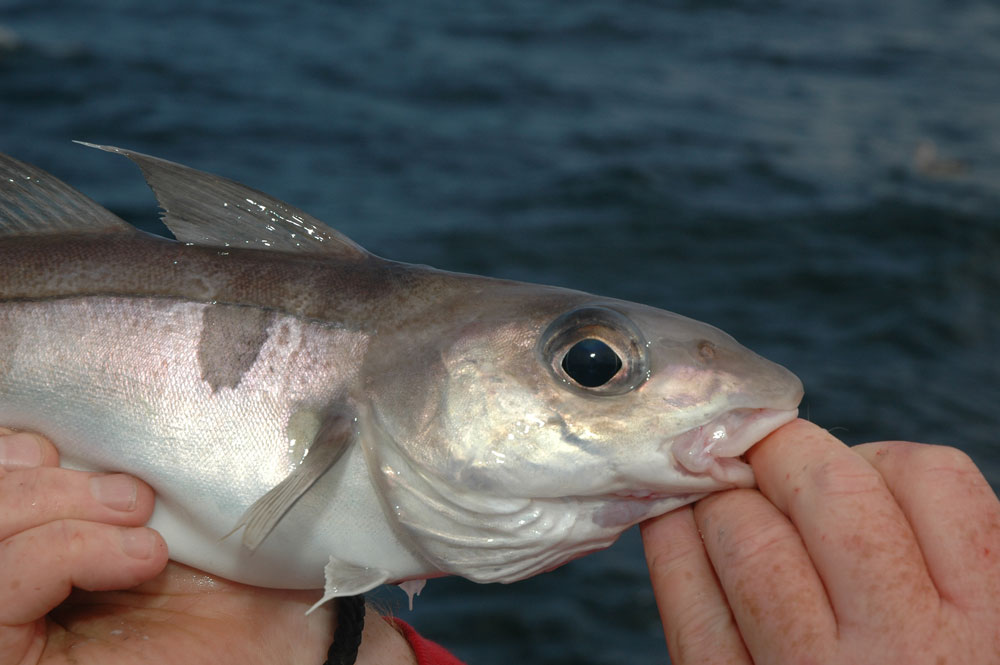Found all around the UK and Ireland but with a more northern bias, haddock are a prized catch based purely on their eating qualities. That said, they can be a challenging fish to target as they are very selective regarding the ground they choose to live on, their selective diet, a tendency to move areas quickly as food is depleted, plus they require a bait presented at exactly the right height off the seabed.

Season
Caught all year round, especially off the Scottish coast, the summer and autumn fishing can be especially good from May right through to November. This is partly due to the weather being more conducive to getting afloat. If there is a time for the bigger fish, it would be either towards the end of winter in February and early March, but more so from September to November when water temperatures have peaked and are starting to fall.
Habitat
Haddock are reef dwelling shoal fish with a preference for depths exceeding 150-feet of water, but can sometimes be caught shallower in winter. They seek mixed broken ground consisting of reef and clear patches of sand or gravel. The bigger fish tend to come off rougher, higher rising reef structure that drops away into more broken ground. Smaller juveniles can be found on gravel or clean sand too.
Wrecks can also hold groups of better sized haddock, but these are normally present where the debris field is scattered well away from the main wreck and on the down tide side.
Weather and Tides
The shallower the water, the more the haddock will be influenced by weather patterns. Settled spells of weather usually give the most consistent fishing and hold the fish in one area longer. In water between 100 and 150–feet deep, fishing a settling sea just after a good blow has gone through is likely to see fewer fish available. Get out into water over 200-feet deep in the same conditions and catches can be good to excellent as the fish have not moved much due to the lessened effect weather has on deeper water at seabed level.
Even in the deeper water, cloudy days will fish better than bright sunny days, but it’s not critical, especially in the deeper water.
If the tide run is not too fierce, even the bigger spring tides will produce fish, but generally, the middle-sized tides fish the best, especially the tides rising towards spring tides. Dropping tides also produce, but expect the fish to be more scattered as each tide reduces in height.
Haddock respond to a new tide and will feed best through the second, third, and fourth hour of the flood, then bites slow up as slack water nears. This is partly because the boat's drift is quickest during the mid flood tide, and you’ll cover more ground to locate the pods of fish. If the boat's drift is slow you cover less ground, and it’s harder to come across fish.

Tackle
Given the deep water, a Tronixpro Banzai Boat 20/30lb Boat Rod and a multiplier holding 300yds of 30lb Tronixpro X8 Probraid, plus backing, covers even deep water and wreck options. It is wise to add a short 50lb mono or 40lb Tronixpro Fluorocarbon shock leader about twice the length of the rod just to protect the braid from seabed or wreckage abrasion.
Haddock feed mostly fairly tight to the seabed, but when the tide slackens they can lift higher in the water, therefore a rig that presents two baits at different levels is the most successful.
- Begin with 44-inches of 60lb Xenon Leader.
- At one end, tie on a Tronixpro Casting Snap link.
- Slide on a Tronixpro Rig Crimp, 3 mm bead, a size 6 Tronixpro Rolling Swivel, another 3 mm bead and a crimp. Now repeat this sequence for the top hook.
- Tie on a size 4 rolling swivel to the free tag end of mono.
- Crimp the lower hook link in position 2-inches above the lead link.
- The top hook swivel is positioned 36-inches above the lower hook and crimped in place.
- Hook lengths are 20lb Tronixpro Fluorocarbon 15-inches long.
- Use Tronixpro Aberdeen hooks in sizes 2 to 2/0.
The lower hook will catch the bulk of the fish during the flowing tide period, but as it eases, expect the top hook to come into its own as the fish lift a little in the water column.
For the most part, plain baits with no attraction will catch plenty of haddock. However, in seas that have been settled for some time, adding attraction can add more fish to the catch. Bright-coloured beads on their own can work, especially a sequence of alternate red and yellow beads, but adding a revolving spoon can be deadly.
To do this, slide on three 5 mm beads, say red with yellow in the middle. Now slide on one of the Tronixpro Blades that come with the little Clevis pin. The line goes through the lower eye of the Clevis pin, through the hole in the spoon, then out through the top hole of the pin. This allows the spoon to revolve easily with the slightest of movement. Both the white and the pink spoons work well, with the pink being best in slightly coloured water and the white best in clear seas. The revolving spoon also adds vibration, and this is a secondary factor to pull the fish into the bait.
Luminous lead weights can also be used as an attraction. Shorecast Pod, Pyramid, and Duck lead all fit the bill, with the glow white and yellow colours being the best.
Baits
The best bait is a fresh belly strip from a mackerel. Cut these from 2ins long to 4ins long and about a half-inch wide. Put the hook through the wide end of the strip once to give it full movement and to behave like a small fish. Herring is a good bait in the spring and autumn, cut the same way. Squid strips can also work, but use two strips side by side on the same hook which adds more scent and more movement.
Fresh mussel is another great bait for haddock, as can be fresh razorfish and cockle.
Lugworm baits can work well in some areas, but generally these are a secondary choice and not part of the common diet of offshore haddock, so can be hit-and-miss.
Combination baits also work for haddock. The best is a lugworm bait tipped with either a fresh mussel or a cockle. A strip of squid added to the mussel also works well.
Tactics
Haddock fishing is done mostly on the drift. If you’re on the uptide side of the boat, that is the boat side the tide is pushing on too, release the line until you feel the seabed. Now release another 25-yards of line and feel what the lead does. If the lead bounces up off the seabed or lifts in the water, reel in and replace with an incrementally heavier lead, say 2 ozs heavier at a time. The lead needs to hit the seabed after releasing that secondary 25-yards of line and stay in contact with it. Now release another 30 to 50-yards of line, then lock the reel into gear. This should see the lead in constant contact with the seabed and the baits presented where the haddock are. The shallow line angle also ensures the baits are tight to the seabed.

You’ll catch more haddock if you occasionally lift the rod tip up a foot or two, then drop the lead back down. This causes the bait to lift and flutter back, and the haddock sees this and hits the bait on the drop as it behaves like a natural bait does.
In areas where the tide run is less fierce, or when the tide is approaching slack water, fishing a small pirk up to 8 ozs in weight can help you pull out the bigger haddock. It pays to bait the pirk with small strips of mackerel and then work it lift and drop just up off the seabed. Don't be afraid of banging the pirk on the rocks, as the rhythmic sound of metal on rock will draw the haddock, and other fish in to see what’s happening.
Another good way to get haddock when tackle losses are heavy is to fish a string of baited feathers. The best feathers are the Axia Hokkai Black and the Axia Hokkai Pink. Bait these with a sliver of mackerel In clear water, also try the Axia Flash and Axia Tinsel feathers as they reflect light and when baited work especially well. Again, with these, simply by lifting and lowering the rod tip to simulate a small shoal of fish swimming just up off the bottom.
Always bear in mind that you’re fishing for pockets of haddock. They are rarely evenly distributed across the ground. When you hit a group of fish, try to get a bait back in the water as fast as possible to maximise your chances of fish.


